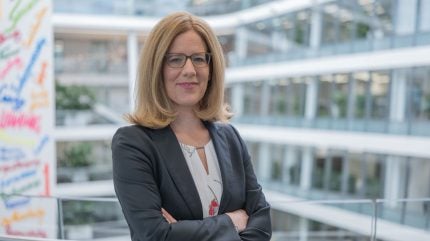
It is no secret that grid upgrades are essential for the energy transition.
Eurelectric’s latest report, Grids for Speed, argued that Europe needs to boost grid investments from an average of €33bn ($35.79bn) to €67bn annually between 2025 and 2050 in order to position grids to effectively support the transition.
However, Eurelectric and Accenture’s joint study, Wired for Tomorrow, found that while digitalisation is the cornerstone of upgrading grids to accommodate today’s evolving energy landscape, European distribution system operators currently lag behind in digital maturity.
Speaking to Power Technology about the study, Accenture’s EMEA Utilities Lead, Andrea Falciai, stressed the urgent need for European grids to embrace digital at scale. However, he said there are challenges to be overcome, namely the industry’s existing workforce being resistant to new technologies as digital tools, to the novice, can be daunting and rather complicated to adopt.
Siemens Grid Software has launched a new product to tackle this problem. Gridscale X is a software solution offering autonomous grid management, helping utilities scale grid capacity quickly, enhance grid flexibility and manage the grid’s modern challenges – mainly, the exponential growth of renewables and DERs.
By integrating with existing information technology and operational technology systems as well as utilising AI and digital twins, Gridscale X provides end-to-end grid management, reducing manual workflows and optimising planning, operations and maintenance.
How well do you really know your competitors?
Access the most comprehensive Company Profiles on the market, powered by GlobalData. Save hours of research. Gain competitive edge.

Thank you!
Your download email will arrive shortly
Not ready to buy yet? Download a free sample
We are confident about the unique quality of our Company Profiles. However, we want you to make the most beneficial decision for your business, so we offer a free sample that you can download by submitting the below form
By GlobalDataSabine Erlinghagen, CEO of Siemens Grid Software, speaks to Power Technology editor Jackie Park on Siemens’ mission to revolutionise grid management through Gridscale X.
Jackie Park (JP): What inspired the development of Gridscale X?
Sabine Erlinghagen (SE): Being fit for purpose for a renewable, decarbonised and electrified world was the main reason. The energy transition means a proliferation of DERs. We can expect a sevenfold growth in new DERs annually through 2030.
The production and consumption of energy is in the hands of consumers, or prosumers. If that is the case, we need to flip the grid on its head to think not from a top-down approach – generation, transmission, then distribution – but bottom-up, the energy now being produced from where it is consumed, treating the prosumer at the centre of the grid. With this prosumer-centric view, we wanted to help manage the grid starting at the low-voltage level, then roll up to medium voltage and high voltage.
Another inspiration was to ease the digital transformation in the sector by making a technology that is easier to use and faster to deploy and implement.
JP: What features and capabilities of Gridscale X set it apart from other grid management solutions in the market?
SE: Typically, grid management solutions today just identify the problems, then it is up to the operator or grid planner to come up with solutions. Gridscale X identifies and analyses the problem, then recommends the best solution based on AI and smart algorithms. It becomes a co-pilot for grid planners and operators to find the best solutions in a world that has become so complex.

JP: Can you explain the software’s automated prediction of outage locations and available flexibility from a more technical perspective?
SE: Basically, we are taking advantage of data that is already there, the richest source being the smart meters. We are calculating backwards: aggregating what is happening at the household, understanding what is happening in the assets, then checking how loaded the transformers are to find flexibility to tap into. For instance, it answers: ‘Where can I postpone charging to tap into that flexibility?’ ‘Where can I change the work process to ease the problem that I have identified?’”
JP: There are still countries across the world where smart meters haven’t been rolled out as extensively. Is this an impediment for the software?
SE: I was referring particularly to the aspect that we have been presenting at the Power Summit, but other functionalities of Gridscale X don’t even need smart meter data. So, I think the rollout of Gridscale X and smart meters can happen together.
Generally, I would say smart meters are a great investment for every utility because it is such a rich source of data. There is a business case for not only better billing and consumer information but also for better grid planning and operations. So as a first step, I could only recommend to all countries to speed up with that.

JP: What are the key benefits that Gridscale X offers to grid operators?
SE: It gives you more out of your existing grids and the ability to delay or reduce the need to build new infrastructure, thanks to the flexibility it enables. You can run your grids closer to your physical limits with transparency. It makes the utility nimble in changing environments. Speed is of the essence – and Gridscale X is there to provide that speed and access the much-needed capacity in the grid.
JP: One of the concerns around any kind of AI or Internet of Things technology is reliability and accountability. That said, if there is a bug in using Gridscale X, how would it be resolved?
SE: There will always be an operator assisting, at least as of now. You don’t go from level zero to five in one go, just like with autonomous driving: you start with driver assistance, and if that works, partial automation, and so forth. You gradually introduce more automation in the system to get you closer to a full automation, but you will still have a human being in control.
Most of the time, you can rely on the system, but if there is something complicated, the system would either proactively ask for help from the operator or the operator can just overrule. In a situation where you are nearing a critical situation in the grid, the system would recommend the least invasive option first, but it would ask the operator for recommendations anyway. Something like a rolling brownout an operator would direct, instead of the system autonomously managing.
JP: With the launch of this software, how does Siemens envision accelerating the digital transformation for grid operators? How do you plan to help them get onboarded?
SE: We designed the system for easy onboarding. Compared with traditional approaches, where it sometimes takes from a year to up to seven years before you generate the first value from digitalisation, Gridscale X has been tested to be deployed and generate value within weeks. I would say it takes 12 weeks to get the first value.
So, it unlocks incremental value fast. With every step you take, you unlock more value, and you bring your organisation along because the technological transformation is also a people transformation. We focused on the UX (user experience) design a great amount so that it is much easier to embrace.
JP: How do you see this software being rolled out in the next five years? Do you see it being deployed worldwide or are there limitations?
SE: There really are no limitations. Ultimately, the task of a grid operator is similar everywhere.
However, the starting position and the pace of deployment may be different. There are certain factors that may affect the rollout, for instance: how much is your grid aging? How many EVs (electric vehicles) are in your country? How much rooftop PV (solar photovoltaic) do you have and at what pace are they connecting to the grid? Places where EVs are faster to proliferate, more solar power, more batteries – places where the pressure [to adopt the technology] is higher, the adoption rates will come faster.
Eventually, however, all those factors will kick in at some point in the near future in all countries, and Gridscale X can help anywhere.
JP: What are the priorities for Siemens Grid Software looking forwards?
SE: We want our customers, the grid operators, to fuel the energy transition and be the pacemaker to accelerate the transition in a secure way. We also want to make the consumer drive the transition along with the digital transformation.





